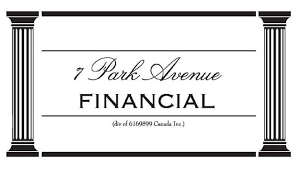|
Guide to Choosing the Best AR Receivable Financing Service
Simplify Your Cash Flow with AR Financing Options
YOUR COMPANY IS LOOKING FOR FACTORING OF RECEIVABLES IN CANADA
RECEIVABLES FINANCING THAT WORKS VIA AN ASSET BASED LENDING SOLUTION!
UPDATED 06/18/2025
You've arrived at the right address! Welcome to 7 Park Avenue Financial
Financing & Cash flow are the biggest issues facing businesses today
ARE YOU UNAWARE OR DISSATISFIED WITH YOUR CURRENT BUSINESS FINANCING OPTIONS?
CONTACT US
CALL NOW - DIRECT LINE - 416 319 5769 - Let's talk or arrange a meeting to discuss your needs
EMAIL - sprokop@7parkavenuefinancial.com

ACCOUNTS RECEIVABLE FINANCING SOLUTIONS IN CANADA
Receivable Factoring in Canada
Receivable Factoring in Canada is four things:
-
New and increasingly accepted
-
Misunderstood
-
Different than in the U.S.
-
Growing more popular every day as an alternative vehicle to business financing than bank loans or unsecured credit lines
Breaking Free from the Cash Flow Trap
Your invoices are approved, services delivered, yet your bank account remains empty.
While you wait 30, 60, or 90 days for payment, payroll deadlines and accounts payable obligations approach and opportunities slip away.
Let the 7 Park Avenue AR receivable financing eliminate this cash flow gap by advancing funds against your outstanding invoices, transforming your receivables into immediate working capital without having to borrow money / take on debt
Uncommon Takes on AR Receivable Financing
- The Seasonal Business Game-Changer: Unlike traditional loans that require consistent monthly payments, AR financing naturally scales with your business cycles—you only pay when you have receivables, making it perfect for seasonal businesses
- The Customer Relationship Protector: Professional collection services included with AR financing can actually improve customer relationships by providing structured, respectful follow-up processes that maintain goodwill while ensuring payment.
UNDERSTANDING FACTORING RECEIVABLES - A RECEIVABLES MANAGEMENT TOOL FOR CASH FLOW
Canadian owners of small businesses and their financial managers keep hearing about factoring accounts receivable, and when we talk to clients who are pursuing this A/R financing option, it is increasingly clear there is a lot of misinformation and 'noise' about this unique type of financing that needs to be clarified.
So why is there so much misinformation about factoring companies and how can small business owners as well as medium-sized firms in Canada get the 'real story' on the unpaid invoice solution to working capital?
Most firms have a significant A/R investment on the company's balance sheet.
Part of the problem is that factoring, in our opinion, means different things to different people, both within the industry itself and also to Canadian business owners.
Similar to the terms 'cash flow' and 'working capital,' the use of the term is interchanged in a variety of ways.
Also, factoring isn't a homegrown solution and migrated to Canada from the U.S. and Europe, where it has been in place for hundreds of years.
Factoring, also known as receivables financing, or 'invoice discounting,' is best utilized when firms are growing rapidly, have sales and verifiable invoices, and require injections of working capital for that A/R investment that otherwise might not be available through traditional sources such as the bank.
RECEIVABLE FINANCING VERSUS FACTORING - ACCESSING CASH FLOW ON YOUR TERMS
A company does not have to be in 'financial trouble' to consider A/R financing as a cash flow solution. It is a solid alternative to a business loan in a term loan structure that brings debt to the balance sheet.
In 99% of cases that we deal with where a client is a 'start-up,' the initial financing through a factoring facility for unpaid invoices is a critical and valuable tool in the early growth of the company.
Let's get back to the confusion around factoring.
Traditional factoring in Canada is in fact simply the sale of your receivables and their purchase by a factor firm. The most immediate benefit is the immediate receipt of cash, which eliminates the need to wait for anywhere between 30-90 days for payment from your customer on the accounts receivable balance.
Over the years it is inherently obvious that every firm out there recognizes that delaying payments to your suppliers is an instant form of cash flow. However, when you are on the receiving end of that, waiting for your money, that is poor consolation!
Enter the factoring transaction to the rescue via factored receivables!
ACCOUNTS RECEIVABLE FINANCING EXAMPLE - HOW DOES ACCOUNTS RECEIVABLE FINANCING WORK?
Does your business receive 100% of the invoice value when you sell your invoices for your goods or services, either individually or bundled in a larger amount of invoices? The answer is 'no' – You generally receive on the same day anywhere from 75-90% of the invoice amount.
The balance is held back by the factoring company as a holdback or buffer and paid to your firm immediately on final receipt of payment from your customer – less factoring fees which are expressed as a discount versus an interest rate. Those terms are spelled out in your factoring agreement.
At that point factoring would be 'free,' but it isn't; there is a further deduction for the commission or financing cost by your factor firm. That cost is one of the greatest issues facing Canadian business owners because it is anywhere in the range from 9% per annum to 1-1.5% per month.
ASSESSING FACTORING PRICING / FACTORING COSTS
The costs associated with factoring in Canada have to be viewed in the context that although they are higher than traditional bank financing, that point becomes moot because your firm probably cannot qualify at this point for a true Canadian chartered bank operating facility.
So a factoring finance company solution simply allows you to grow your firm when you can't obtain sufficient financing otherwise.
So now we have understood what factoring is, and why it has become a tool within the Canadian business financing toolkit.
That's the easy part.
The challenge for Canadian businesses then becomes:
-
What type of firm is the best one for my company and industry?
-
How does this financing work on a daily basis with most factoring companies?
-
Am I comfortable enough to let the factoring firm notify my customers regarding outstanding invoices around verification and payment?
-
Is there an alternative to involving my suppliers and customers in this financing process?
We advise clients that the best factoring facility in Canada is one in which your firm can bill and collect its own receivables.
That type of facility is called non-notification and is as close to traditional financing mechanics as one can get. Talk to the 7 Park Avenue Financial team about Confidential Receivable Financing.
Case Study
Manufacturing Company Doubles Production Capacity
ABC Manufacturing faced a classic cash flow challenge: $500,000 in outstanding invoices with 60-day payment terms, but needed immediate capital to fulfill a large new order. Traditional bank financing would take weeks and require extensive collateral.
Through AR receivable financing, ABC received $425,000 within 48 hours (85% advance rate). This immediate working capital allowed them to purchase raw materials, meet the delivery deadline, and secure a long-term contract worth $2 million annually.
The result? ABC transformed from struggling with cash flow gaps to confidently accepting larger orders, knowing their receivables could provide immediate funding for growth opportunities.
KEY TAKEAWAYS
- Invoice Conversion Process: Understanding how outstanding invoices transform into immediate cash represents the fundamental concept driving all AR receivable financing benefits and applications.
- Credit Risk Assessment: Grasping how financing companies evaluate your customers' creditworthiness rather than your business credit determines approval likelihood and pricing structures.
- Advance Rate Calculations: Knowing typical 70-90% advance rates helps predict available funding and plan cash flow requirements based on outstanding receivables portfolio.
- Recourse vs Non-Recourse: Distinguishing between these two structures affects your risk exposure, costs, and ultimate responsibility for customer payment defaults.
- Notification Requirements: Understanding whether customers know about the financing arrangement impacts relationship management and operational procedures throughout the process.
- Fee Structure Components: Recognizing discount rates, service fees, and additional charges provides accurate cost comparison against other financing alternatives available.
- Industry Suitability Factors: Identifying which business types benefit most helps determine whether AR financing aligns with your specific operational model and customer base.
- Documentation Standards: Knowing required paperwork and ongoing reporting streamlines the application process and ensures smooth operational integration with existing systems.
CONCLUSION - CAN YOUR BUSINESS BENEFIT FROM FACTORING
So what's our bottom line summary – it's simply as follows. Factoring in Canada is only misunderstood because business owners don't have access to solid unbiased information on how it works, what it costs, and how it benchmarks as an alternative to traditional financing when you need to secure financing.
Some, but not many factoring companies exist that are very transparent in financing your firm and its customers.
Factoring has higher costs, but those costs can grow your sales and profits considerably around new and existing customers, which has great appeal to the business owner.
Call 7 Park Avenue Financial, a trusted, credible and experienced advisor in this somewhat misunderstood area of Canadian business financing.
FAQ / FREQUENTLY ASKED QUESTIONS / PEOPLE ALSO ASK / MORE INFORMATION
What is the factoring of receivables?
Factoring is a financial transaction that allows a company to sell and finance its accounts receivables as the company generates revenues. Invoices are sold at a discount, which is often confused as an interest rate – which it is not.
Accounts receivable factoring, also known as 'invoice factoring,' is a method used by companies who are unable to attract traditional financing to access cash flow without taking on business loans and debt. The accounts receivable factoring company purchases invoices for a 'factoring fee.' The company pays the borrower the invoice payment immediately – both recourse and non-recourse factoring are available.
What does factoring mean in finance?
In finance terms, borrowing under a factoring solution allows a company to obtain immediate cash based on financing the amount they have due from their accounts receivable. Only business invoices are factored for firms who sell on business credit terms.
What is factoring and its advantages and disadvantages?
For factoring solutions to work properly, a company's invoices must reflect goods sold and services delivered. Invoices in dispute cannot be financed. Financing costs under a factor solution reduce profit, so companies must have a good gross margin. Factoring companies take the invoices as security for the cash advance, which is typically made immediately on invoicing.
What types of businesses qualify for AR receivable financing?
AR receivable financing works best for B2B companies with creditworthy commercial customers, typically including manufacturers, distributors, staffing agencies, and professional service providers who invoice clients rather than collect immediate payment.
How quickly can I access funds from my receivables?
AR receivable financing can provide funds within 24-48 hours of invoice submission, compared to waiting 30-90 days for traditional customer payments, making it ideal for urgent cash flow needs.
What percentage of my invoice value can I receive upfront?
Most AR receivable financing advances 70-90% of invoice value immediately, with the remainder (minus fees) released when your customer pays, ensuring you receive most of your money without waiting.
Do my customers know I'm using receivables financing?
AR receivable financing can be structured as either notification (customers know) or non-notification (confidential), allowing you to choose based on your customer relationship preferences and business needs.
What happens if my customer doesn't pay the invoice?
With recourse AR receivable financing, you remain responsible for unpaid invoices, while non-recourse financing transfers the credit risk to the financing company, though this typically costs more.
Who can use AR receivable financing for their business?
AR receivable financing serves B2B companies with commercial customers, including manufacturers, distributors, staffing agencies, and service providers who need immediate cash flow from outstanding invoices.
What documents are required for AR receivable financing approval?
AR receivable financing typically requires recent financial statements, accounts receivable aging reports, customer credit information, and sample invoices to evaluate your receivables portfolio quality.
When should a business consider AR receivable financing?
Businesses should consider AR receivable financing when facing cash flow gaps, growth opportunities requiring capital, seasonal fluctuations, or when traditional lending options are unavailable or insufficient.
Where can Canadian businesses find AR receivable financing providers?
AR receivable financing is available through specialized factoring companies, alternative lenders, and some traditional banks, with 7 Park Avenue Financial helping connect businesses to appropriate providers.
Why choose AR receivable financing over traditional bank loans?
AR receivable financing offers faster approval, no collateral requirements beyond receivables, credit decisions based on customer creditworthiness rather than just your credit, and immediate access to working capital.
How much does AR receivable financing cost compared to other options?
AR receivable financing costs vary from 1-5% of invoice value, often more expensive than bank loans but faster and more accessible, with costs depending on customer credit quality and terms.
Which industries benefit most from AR receivable financing?
Industries with longer payment terms like manufacturing, wholesale distribution, staffing, trucking, and professional services benefit most from AR receivable financing due to extended cash flow cycles.
How does the AR receivable financing application process work?
The AR receivable financing process involves submitting receivables information, credit verification of customers, agreement signing, and ongoing invoice submission for immediate funding within days.
What credit requirements exist for AR receivable financing?
AR receivable financing focuses primarily on your customers' creditworthiness rather than your business credit, making it accessible even for businesses with limited credit history or temporary financial challenges.
How quickly can AR receivable financing solve cash flow problems?
AR receivable financing can resolve cash flow issues within 24-48 hours of approval, providing immediate working capital compared to weeks or months required for traditional financing solutions.
How does AR receivable financing improve business cash flow management?
AR receivable financing transforms unpredictable cash flow into steady working capital by converting outstanding invoices to immediate funds, allowing better financial planning and operational stability for growing businesses.
What competitive advantages does AR receivable financing provide?
AR receivable financing enables businesses to offer extended payment terms to customers while maintaining immediate cash flow, creating competitive advantages through improved customer service and market positioning.
How can AR receivable financing support business growth initiatives? AR receivable financing provides growth capital without taking on debt, allowing businesses to invest in inventory, equipment, marketing, or expansion while using existing receivables as the funding source.
What operational benefits come from using AR receivable financing?
AR receivable financing often includes professional credit management services, reducing internal collection costs while improving customer payment processes and overall receivables management efficiency.
How does AR receivable financing reduce financial stress for business owners?
AR receivable financing eliminates the anxiety of waiting for customer payments by providing predictable cash flow, allowing business owners to focus on operations rather than constantly worrying about receivables collection.
What exactly is AR receivable financing and how does it work?
AR receivable financing involves selling your outstanding invoices to a financing company at a discount, receiving immediate cash (typically 70-90% of value) rather than waiting for customer payments.
Is AR receivable financing the same as factoring? AR receivable financing and factoring are essentially the same concept—both involve converting accounts receivable into immediate cash flow, though terminology may vary between different financing providers.
What are the main differences between recourse and non-recourse AR financing?
Recourse AR receivable financing means you remain responsible if customers don't pay, while non-recourse transfers that risk to the financing company, typically at higher cost but greater protection.
How do I know if my receivables qualify for this type of financing?
AR receivable financing typically requires invoices from creditworthy commercial customers with payment terms under 90 days, clear documentation, and established business relationships for optimal qualification.
What should I expect during the AR receivable financing onboarding process?
The AR receivable financing onboarding includes credit verification of your customers, documentation review, agreement execution, and setup of ongoing invoice submission and funding processes.
What factors determine AR receivable financing costs and terms?
AR receivable financing costs depend on customer credit quality, invoice payment terms, your business volume, industry risk factors, and whether you choose recourse or non-recourse options.
How does AR receivable financing affect customer relationships?
AR receivable financing can be structured to maintain existing customer relationships through non-notification options, or can actually improve relationships through professional collection services and extended payment terms.
What alternatives exist to AR receivable financing for similar cash flow needs?
Alternatives to AR receivable financing include traditional bank lines of credit, asset-based lending, merchant cash advances, or equipment financing, each with different qualification requirements and cost structures.
Statistics on AR Receivable Financing
-
78% of businesses using AR financing report improved cash flow stability
-
Average funding time: 24-48 hours vs 30-90 days for traditional loans
-
Typical advance rates range from 70-90% of invoice value
-
85% of factoring clients are small to medium-sized businesses
-
Invoice factoring market grew 15% annually over the past 5 years
-
92% of businesses using AR financing continue using it long-term
CITATIONS / MORE INFORMATION
- Commercial Finance Association. "State of the Commercial Finance Industry Report 2024." https://www.cfa.com
- Bank of Canada. "Small Business Credit Conditions Survey." https://www.bankofcanada.ca
- Statistics Canada. "Survey on Financing and Growth of Small and Medium Enterprises." https://www.statcan.gc.ca
- Canadian Federation of Independent Business. "Business Barometer Report." https://www.cfib-fcei.ca
- Industry Canada. "Key Small Business Statistics." https://www.ic.gc.ca
- 7 Park Avenue Financial " Receivable Financing Companies". https://www.7parkavenuefinancial.com/ar_finance_receivables_financing.html

' Canadian Business Financing With The Intelligent Use Of Experience '
STAN PROKOP
7 Park Avenue Financial/Copyright/2025

ABOUT THE AUTHOR: Stan Prokop is the founder of 7 Park Avenue Financial and a recognized expert on Canadian Business Financing. Since 2004 Stan has helped hundreds of small, medium and large organizations achieve the financing they need to survive and grow. He has decades of credit and lending experience working for firms such as Hewlett Packard / Cable & Wireless / Ashland Oil
|